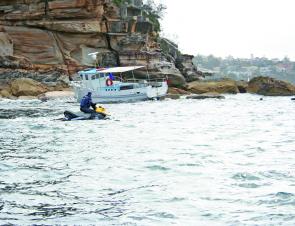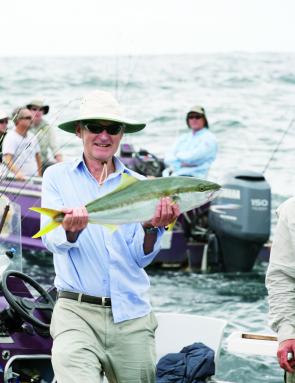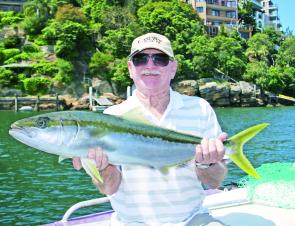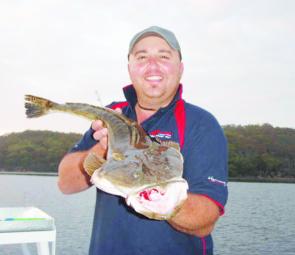As Sydney’s population grows out of control and the quality of fishing in the Harbour improves dramatically, overcrowding is becoming a problem.
Boat ramp queues are horrendous and it’s common to struggle to find an anchorage at some of the better-known spots, especially when the kingfish are on.
Here are a few tips that might give you an advantage in the peak of the season.
It’s beneficial to yourself and other boaters to be able to anchor properly.
Consider the following scenario, one that we have probably all been involved in at some stage.
You are first on a location, have the pick of spots and get your anchor set. You’ve anchored perfectly and the fish start coming in straight away.
Over the next hour you experience good fishing and, as the crowd builds up, so does the wind. You have boats all around you and your anchor starts to slip.
As you drift, you start picking up other anglers’ lines, not to mention bumping into one of their boats. You drift off ‘the spot’ and, as the bite declines, to add insult to injury, you notice another boat moving into your place. Game over.
Get yourself a good, heavy anchor; I use a SARCA for soft and hard bottoms.
Even more important is chain. Get advice from your local chandlery but, as a rough guide, a boat length of 10mm chain would be a minimum for a 6m boat.
My anchor is hard work to pull up because of its weight but once it’s set. It’s there to stay. That’s way better than having to pull it in three times after it drags.
The other downside of a dragging anchor is that it will spook some species of fish. A correct-size anchor, pulled horizontally, is more likely to hold than an oversize anchor pulled upwards.
To locate yourself on ‘the spot‘ takes some skill and planning but pays dividends.
You must calculate where your boat would drift if left to the influence of current and wind. You can work this out by doing a preliminary drift to see exactly what happens.
Position your boat over ‘the spot’ and start heading in the opposite direction to what your boat went on the test drift.
For example, if your boat drifted south then you must go north of ‘the spot’. How far north to go depends on the strength of the wind and current. The stronger, the further.
As a rough guide, work on a 5:1 anchor scope ratio. That is, if the water is 20’ deep you should let out 100’ of rope, 20 x 5. You can use less in good conditions and more in rough weather.
Set your pick and, theoretically you should drift back onto ‘the spot’.
Most of you reading this will be clued up enough to know not to charge through a school of fish working on the surface.
If you mess it up, you get a clear message from other anglers either hurling abuse or sinkers.
If you have to let another angler know that he has breached the protocol, I suggest that a friendly, slow approach and a diplomatically delivered educational message will have a lot more impact than abuse and will certainly be a lot less dangerous than hurling a snapper lead.
When the time comes to approach the school there are a few things to keep in mind.
Don't charge right up to, and never into, the feeding school because this will almost certainly put them down.
There are exceptions to this, when a rapid approach is essential. Certain species will, at times, feed in very short bursts and if you are not there quickly you will miss your shot. You must approach fast but keep your distance. The obvious distance to pull up is at the extremities of your personal casting range.
In windy conditions you can use the wind to make a quiet approach on a school but position your drift to take you alongside the school and not over the top of it.
You must consider your boat shadow, which will put fear into your school long before the engine noise.
Shadows are the early warning sign of a large predator where engine noise is unfamiliar and fish have proven to be to be far more wary of dangers that they are familiar with.
The basic rule is to never get between the sun and the fish. The lower the sun is in the sky, the more this applies.
Try to anticipate the direction that the fish are moving and be sure not to put your boat in their path.
Reads: 1879
The worst-case scenario for anchor failure is the loss of the vessel. But, in crowded waterways, inefficient anchoring can also raise anglers’ ire.

Close-quarters fishing might be OK when you’re mates with those on board other boats but you’ll make no friends even then if your anchor drags.

When ‘X’ marks the spot for kingies like this, it pays to keep the boat solidly attached to the bottom.

Flatties like this should be working their way through the Harbour this month.




